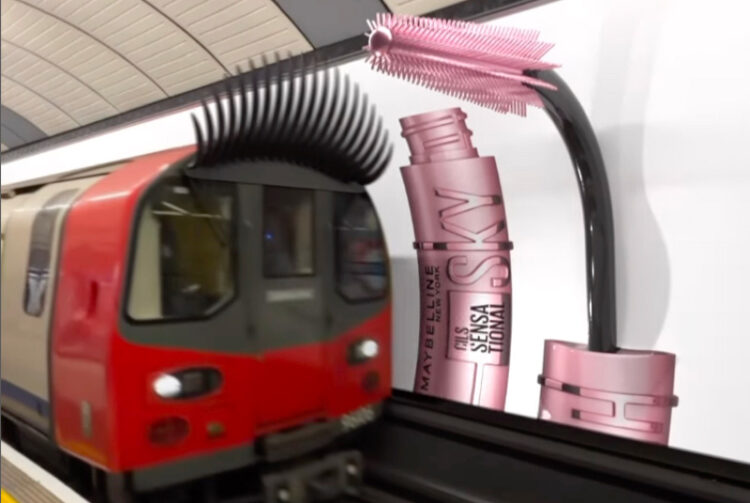OOH look at me

Opinion: 100% Media 0% Nonsense
Fake ads or branded ‘fan art’ stand a much better chance of going viral when they marry bizarre activations with seemingly real world locations.
User-generated content on social media is generally terrible. But, because we’re humans and we don’t process information properly, we all remember the gems and forget the duds. And lately we’re seeing some really interesting fake ads being created on social media which have one interesting common thread — they all involve outdoor.
Whereas it’s become commonplace to satirise or make fun of movies, TV shows, podcasters, or influencer marketers on YouTube and TikTok, there seems to be a special place for out-of-home (OOH) where creators will spend time thinking up novel ways for advertisers to sell stuff.
Fake it til you make it
Why is this? Let’s look at three examples that I’ve seen on my social media feeds in recent weeks.
Jewellery retailer Pandora “collaborates” with visual artist to make it flagship store in Cophenhagen appear to be dominated by giant a padlock and key. The Instagram post publicising it even has a tagline: “What would you unlock if you had a magical key?” (My answer: aren’t non-magical keys capable of unlocking stuff, too? I’d expect a luxury goods seller to know a lot about locks and keys)
This came after Mayebelline’s now infamous giant mascara brush, which appears to emerge from a Tube poster at just the right time to give a London Underground train a top up on its giant eyelashes. The Instagram post announces that the L’Oréal brand is “taking over London”, which sounds a bit bellicose in the service of selling specialist body paint but each to their own.
And, then, just last week I was treated to the spectacle of a giant bucket of new iPhones being tipped over the top on Apple Store. The TIkTok video created by “viral content creator” Killah_Trone takes the term ‘drop’ literally when drawing attention to the upcoming launch of the iPhone 15.
@killah_trone Who’s excited for the drop?@apple #apple #iphone15 #iphone15promax #iphone15pro ♬ оригинальный звук – killah_trone
Spotted the trend yet? Aside from all being fake (or demos), these viral marketing stunts all take what looks like real-world locations and get play around with how different brands can use outdoor in novel ways. In the case of Maybelline, it even manage to convince a good few people that this was a real outdoor activation.
Poster children
There’s no doubt about it: there’s clearly something about OOH that makes people go gah-gah for gimmickry. Part of this is due to familiarity: OOH is by far the oldest medium and there’s a reason why UGC creators are drawn to taking real-world locations and inserting virtual marketing stunts.
It also speaks to how we use brands to make sense of the world. When I was a boy it was not uncommon for teenage boys to shave Nike ticks into the back of their heads or draw other logos in wet cement.
But it’s also about outdoor’s USP as a medium: it’s a mass marketing from a single location. And the location itself becomes part of the message.
Ocean Group CEO put it well in an interview with me last year, referencing the Queen’s messages of support during the Covid crisis being carried on the Piccadilly Lights. It’s clearly a gimmick because people were not supposed to be loitering on Regent Street watching the Queen give a speech.
But it was powerful, nonetheless. There’s something about our brains that makes us think that’s what people do in times of high importance. Look at any disaster movie and there’s always a scene where countless gawpers are congregating at Times Square watching the strong leader give a rousing speech. A portrayal of a big screen with a captive audience is as good as it gets in media and advertising: big message, big format, big attention.
It’s also a pretty nifty way of achieving what The Creative Curve author Allen Gannett described as the key to achieving mainstream success: an idea only gains widespread attention by between sufficiently tethered between familiarity and novelty. Too familiar and you’re boring; too novel and you’re merely ‘experimental’.
An outdoor setting, especially in an iconic location like Piccadilly Circus or Imax, is instantly familiar. Get Tom Cruise’s head to pop out of a movie poster for Mission Impossible and job done.
(I just Googled “tom cruise pop out movie poster” and, to my astonishment, this doesn’t seem have been done yet. There you go, creatives, that’s one you can have for free.)
No wonder, then, that Ocean’s key takeaway from that experience was “the medium is more valuable than we thought”.
“The medium is no longer [just] a ‘poster’,” Bleakley explained. “If somebody posts about a Netflix ad on the Imax [site in Waterloo, and then the actors from Top Boy share that video, that goes all over the world… everyone has now realised this entertainment factor leads to greater levels of engagement and is really important.”
Keeping it real
This is important as we head into a double election year in the UK and the US. We have seen from past election years that we are simply failing to rise to the challenge of tackling online misinformation and disinformation, so next year promises to be even worse. Listen to the latest edition of our podcast to learn more about how trans people in particular are being impacted by the ongoing disinformation assault on social media.
Unless something is happening behind the scenes and in the shadows, next year will be the mother of all disinformation splurges. AI is getting increasingly effective at deepfake videos.
In a social media environmnent where you will begin to question whether anything you see with an “agenda” is real or not, the compulsion to cling to something ‘real’ will only grow in importance.
Show your working
I’m not saying that this means outdoor advertising is going to see a direct benefit from this trend. Maybe it should, having been wrecked during the Covid-19 lockdowns and, for all the ongoing macroeconomic problems dampening down advertising demand this year, OOH remains the only offline medium that is set to grow at all this year.
But we should look at this trend of outdoor advertising fan art as the flashing amber light that it is: consumers want stories, whether they are editorial creations or marketing wheezes, that are rooted in reality. Not just physical locations, but real concerns, real emotions and real heritage.
How do you ensure your content is rooted in the real world. You need to show your working. Phone a friend and show them what you’re working on. See how it resonates with them. Even better, ask a bunch of people and take notes. Make friends who are prepared to tell you what is great work and what stinks.
This is why most user-generated content on the internet is terrible. They are likely created by loner wannabes with too much time on their hands and, despite having great ideas, lack real-world experience or a professional network to make that idea look and sound great.
AI and video editing software are amazing things but they are just tools. Media, at its core, is a tool too — a means of humans communicating to other humans. Communicating relies on connection, and connection is only meaningful if it is rooted in the physical world.
It’s also a question of transparency. When I’m served a personaiised ad on YouTube or Twitter, it’s usually some terribly-made “crypto bro” showing off his swimming pool and lambo before telling me “all of this can be yours by signing up to my online training scheme”.
Hm, I wonder whether cyptro bro would have the balls to pay for an outdoor poster (I can say that because it’s never a woman trying to crypto-scam me). When you choose to put your message in a billboard, where real people are walking past it every day, you are holding yourself to a higher standard of accountability. Even more than TV and radio.
Virtual limits
The broader lesson for me, then, is one of perspective as this industry delves deeper into using ingenious technology to create and personalise content in media. There’s a limit to which digital media can virtualise the world for us before it makes us feel unnereved. It may be why 3D TV and 3D cinema has failed to take off, or why virtual-reality headsets (aside from being really expensive and making you look like a clown) never sell well.
In other words, digital only works well as a extension of the real world. It does a pretty bad job at replacing the real world. And for that we should be grateful.
One more thing: August isn’t even over yet and this month has already been the biggest month yet for The Media Leader Podcast, thanks to the hard work of Jack Benjamin and our production partners at Trisonic. As well as publishing interviews each week, the Media Leader editorial team has begun putting out bonus episodes where we dissect industry news and talk about what we’re working on the broader trends in media and advertising.
Seriously now, one last thing: We’re hiring for a deputy editor! Please share to anyone who might be interested and is as excited about media and advertising as we are.
 Omar Oakes is editor of The Media Leader and leads the publication’s TV coverage. ‘100% Media 0% Nonsense’ is a weekly column about the state of media and advertising. Make sure you sign up to our daily newsletter to get this column in your inbox every Monday.
Omar Oakes is editor of The Media Leader and leads the publication’s TV coverage. ‘100% Media 0% Nonsense’ is a weekly column about the state of media and advertising. Make sure you sign up to our daily newsletter to get this column in your inbox every Monday.




